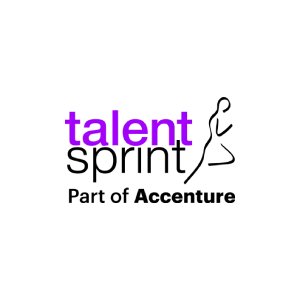How to choose the Right course as a beginner?

Imagine standing at a crossroads after graduation. One road leads to coding, another to design, another to management, and dozens more stretch out in front of you. Choosing the right course feels like choosing which path to follow. Pick the right one, and it could open doors to exciting opportunities. Pick the wrong one, and you might feel like you’re walking in circles.
But here’s the good news as just like Google Maps guides you step by step, the right roadmap for picking a course can guide you toward your goals.
Why is choosing the right course important?
The right course choice goes beyond academics, it's a career-defining decision that can change your life path. Let's see why this choice needs your careful attention.
- It shapes your future career path.
Your subject choices are the foundations of your professional trip. Students who align their courses with career goals position themselves better in the job market.
- It affects your motivation and performance.
Students who study subjects they love work harder and achieve better results. Course selection links directly to academic success, with motivation as the key factor in student’s performance.
- It determines your return on investment.
Education needs much time and money. So calculating your training ROI will give a clear picture of your learning budget needs. The right course delivers real benefits through lower losses and higher earnings throughout your career.
How to pick the right course?
- Figure out first who you are and what you are doing: Start by figuring out where you stand right now. Are you fresh out of high school, looking for qualifications? Maybe you want to switch careers, move up in your job, or take a career break?
- You need to be clear about your long-term goals: Map out what you want to achieve in the next 1-3 years and where you see yourself 5-10 years from now.
- What interests you the most, and list down your strengths: Find subjects that spark your excitement with simple questions. What subjects make you happy at school? Which news topics catch your eye? How do you learn best?. You can take aptitude tests that assess your potential in specific fields.
The Steps to Choose the Right Course for a beginner.
Finding the right course takes a structured approach. Let me walk you through the steps that will help you discover your perfect match.
Step 1: Start by identifying your Goals
You need absolute clarity about your career destination before exploring course options. Your original goal acts as the compass that guides all future decisions.
Your motivation determines your approach. Consider these key questions:
- Are you seeking your first entry-level position?
- Looking to advance in your current career path?
- Planning a complete career pivot into a new field?
The right first step isn't selecting a course, it's choosing your direction.
Example:
If you want to get into data science, enrolling in a Data Analytics or Machine Learning course makes sense. But if your goal is to manage teams, Management Courses would be a better fit.
Step 2: Assess Your Interests and Strengths
Choosing a course that resonates with your natural interests makes learning enjoyable and sustainable. Ask: “Do I enjoy solving problems with numbers, or do I prefer working with visuals and creativity?” If you’re good at logical reasoning, coding, or finance-related courses could be ideal. If creativity excites you, design or media-related programs might suit you better.
Example:
A graduate who enjoys both designing user interfaces and solving complex logic problems could explore the Java full stack developer course, as it blends the creativity of frontend design with the problem-solving depth of backend programming.
Step 3: Research Industry Demand
Interest is important, but market demand matters too. Research industry trends through platforms like LinkedIn Jobs, Naukri, or Glassdoor. Look at which roles are growing, like Data Analysts, AI Specialists, Cybersecurity Experts, or Cloud Engineers.
Start by asking yourself these questions first:
- Which industries are growing rapidly right now?
- What roles are in demand in my country or globally?
And after analysing the answers to these questions, you will get a clear picture of what do you want.
Example:
Many graduates enrolled in Cloud Computing courses after observing the rising demand for AWS professionals, leading to better employability.
Step 4: Check Course Level & Curriculum
Your goals and learning style will help you look at the course structure, which is significant. And
Not all courses are created equal. Once you shortlist a few, dive deep into their curriculum. Evaluate and ask yourself:
1. “Does this syllabus cover both basics and advanced concepts?” and
2. “Is it updated with the latest industry tools?”
Then, go through the syllabus carefully. Look for hands-on projects, capstone assignments, and industry case studies. Beginners should prioritise courses that start from the basics but gradually advance.
Example:
A Coding Bootcamp that begins with HTML/CSS basics and gradually moves into full-stack projects is better suited for freshers compared to a purely theory-driven advanced programming course.
Step 5: Evaluate Time Commitment and Flexibility
You know that if you want to learn something, you have to invest a certain amount of time into that, so before enrolling, just ask yourself:
- Can I commit full-time, or do I need something flexible?
- How long am I willing to invest before seeing results?
As Freshers often juggle internships, side projects, or part-time work. Select a course that aligns with your schedule. Online platforms often offer self-paced learning, whereas boot camps or management programs may require full-time dedication.
Example:
A 6-month coding bootcamp may fast-track you to job readiness, while a 2-year degree gives deeper academic grounding. Balance speed with depth according to your goals.
Step 6: Seek Guidance from Mentors and Peers
When you're unsure which path to take, leaning on someone who's walked the journey before can make all the difference. Mentors, professors, alumni, or professionals on LinkedIn often offer insights that go beyond course brochures and flashy ads.
Ask them in a conversation:
- "Which course helped you land your role?" or
- "Has any program added that vital edge after graduation?"
Example:
Graduates from Talentsprint’s AI-ML bootcamp often report how faculty and alum mentorship helped them bridge the gap between technical training and real-world job expectations. This bootcamp helps build responsive applications using both frontend and backend technologies, paired with interview preparation and mentorship.
Step 7: Test Before You Commit
As a fresher stepping into the vast ocean of career opportunities, it’s natural to feel unsure about which direction to swim. That’s where experimenting becomes your life raft. Instead of diving straight into a long, expensive course, take small dips to test whether the subject truly excites you.
1. One of the best ways to “test the waters” is by attending trial classes or webinars. Trial sessions can provide you with a sense of the teaching style, curriculum, and classroom interaction.
TalentSprint often hosts webinars on TalentSprint bootcamps where freshers can connect with teachers, alumni, and industry experts.
2. Free trial modules work like a course test drive. You can access selected lessons without paying, allowing you to evaluate the teaching quality, course structure, and ease of understanding.
Why is it important to test the waters?
By joining webinars, exploring free modules, or seeking student feedback, you reduce the risk of wasting time and money on a course that doesn’t suit you. Instead, you build confidence, clarity, and momentum toward a career path that truly excites you. Testing before you commit ensures that every step you take is aligned with your future goals.
Common Mistakes Beginners Make?
Even the best students can make mistakes when selecting courses. Understanding these common pitfalls will help you avoid derailing your educational experience before it starts.
1. Choosing based on peer pressure
Students often feel pressured to follow their friends' or their social circle's opinions when picking courses. This external pressure guides them toward dissatisfaction and contributes to burnout and a lack of motivation later.
How can you tackle it? However, you should remember that others might have specific ideas about what you should do, but ultimately, you made the final decision.
2. Ignoring course content and structure
Students sometimes choose programmes without really learning what they involve. They depend only on attractive brochures or websites that don't give the full picture.
How can you tackle it? You need to understand the difference between courses you must take and those you feel you should take, maybe because your friends enrolled or the professor has an excellent reputation.
3. Overlooking long-term career fit
Many beginners don't think about job opportunities available after graduation. Wrong subject choices can create challenging academic experiences that lead to lost self-esteem, confidence, anxiety, and even depression.
How can you tackle it? You should research potential career paths by talking to alumni and searching professional networks like LinkedIn.
Conclusion
“Every great journey begins with a choice, not a chance”.
Choosing the right course as a beginner is like setting out on your very first journey. At the start, the path may look uncertain, with too many roads stretching ahead. Some trails are smooth, some winding, and others full of unexpected turns. But every step you take, whether it’s attending a free webinar, speaking to a mentor, or experimenting with trial classes, becomes part of your map.
Because the beauty of this journey is that there’s no “one right road.” Each step teaches you something, sharpens your vision, and brings you closer to the destination you’re meant for.
Frequently Asked Questions
Q1. How do I determine which course is the best fit for me?
Start by defining your career goals, assessing your interests and strengths, and researching various course options. Consider factors like curriculum content, learning style, and potential career outcomes. It's also helpful to speak with current students or professionals in your field of interest.
Q2. What should I consider when choosing a course as a beginner?
As a beginner, focus on courses that align with your interests and provide a strong foundation in your chosen field. Look for programmes that offer practical experience, mentorship opportunities, and a supportive learning environment. Don't forget to consider the course level, prerequisites, and your long-term career aspirations.
Q3. How can I avoid common mistakes when selecting a course?
To avoid common pitfalls, resist choosing courses based solely on peer pressure or popularity. Thoroughly research course content and structure, ensure you meet all eligibility requirements, and consider the long-term career fit. It's also crucial to balance your interests with practical considerations like job prospects and earning potential.

TalentSprint
TalentSprint is a leading deep-tech education company. It partners with esteemed academic institutions and global corporations to offer advanced learning programs in deep-tech, management, and emerging technologies. Known for its high-impact programs co-created with think tanks and experts, TalentSprint blends academic expertise with practical industry experience.



